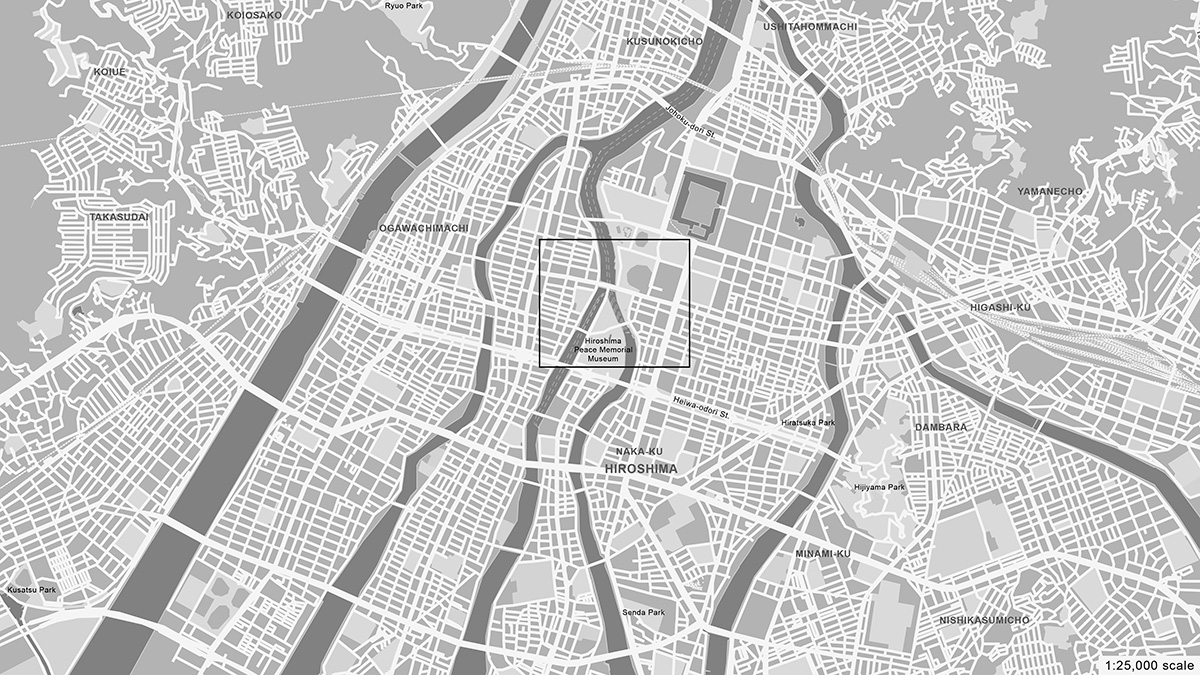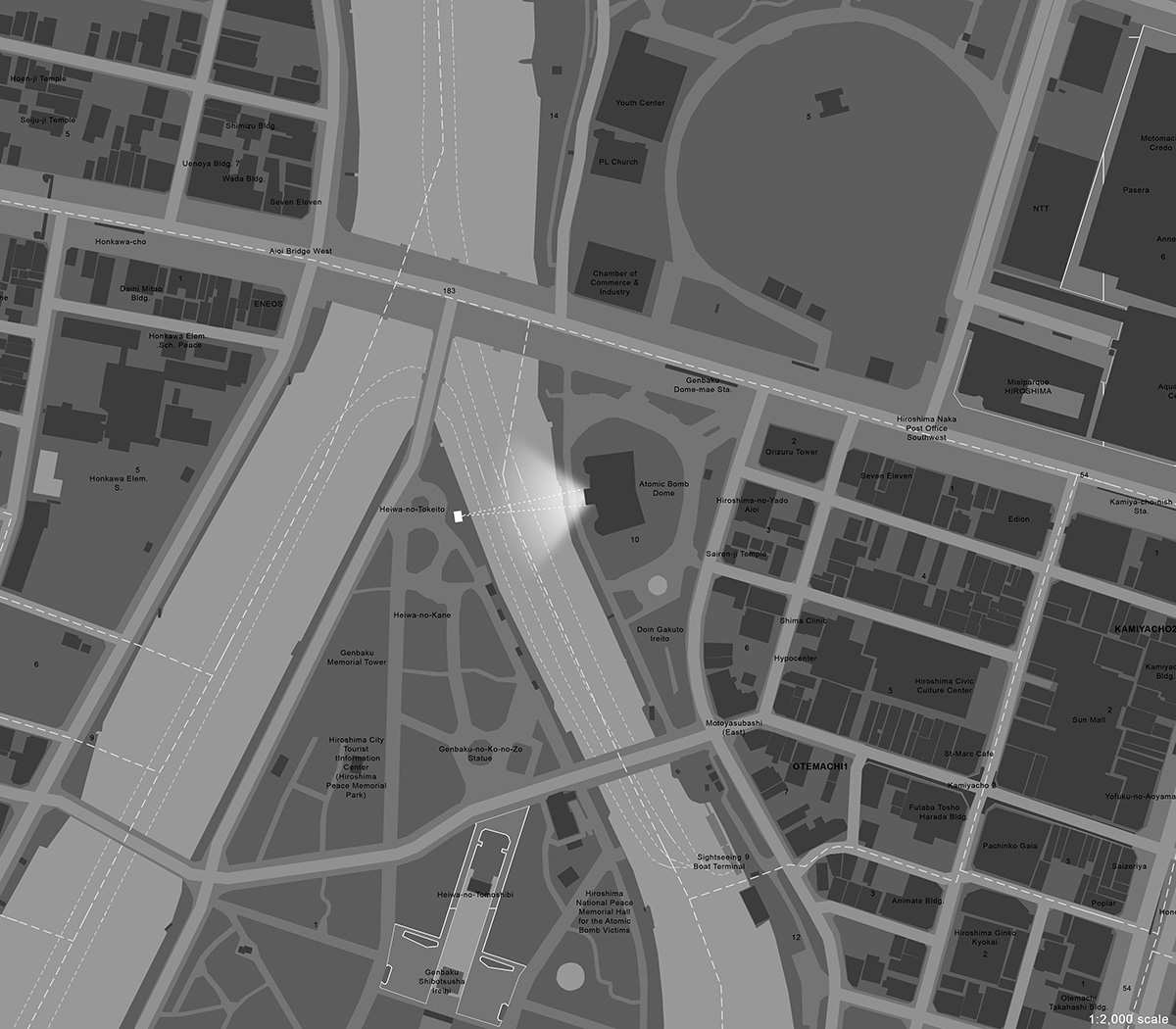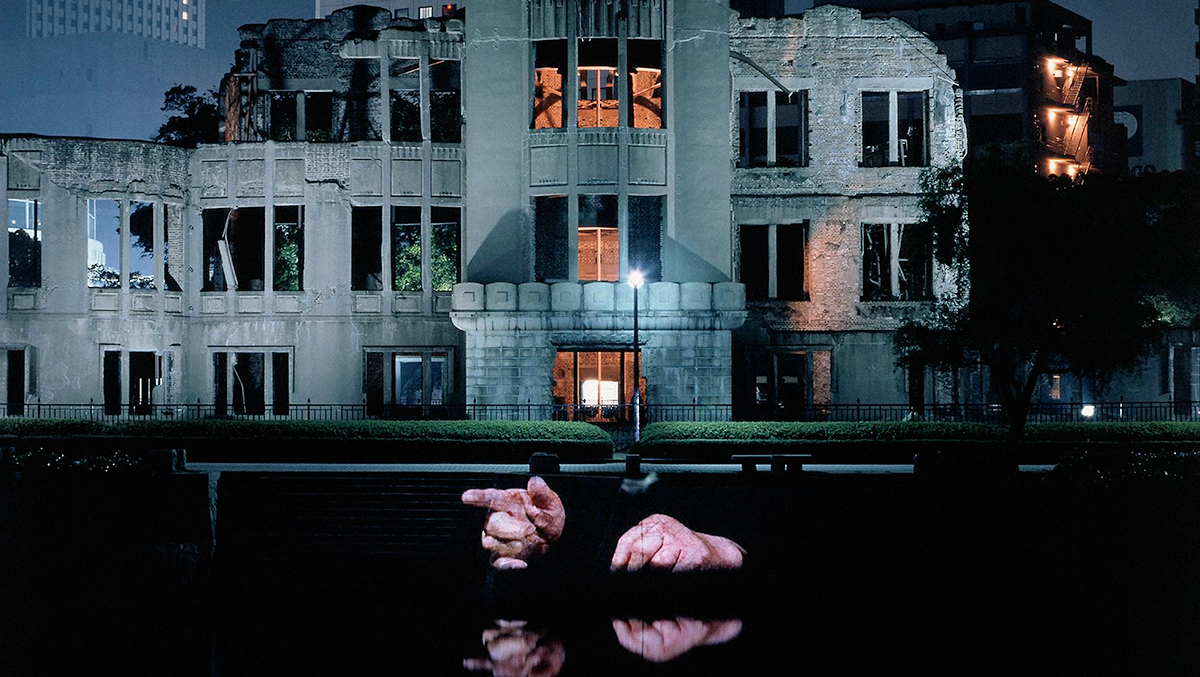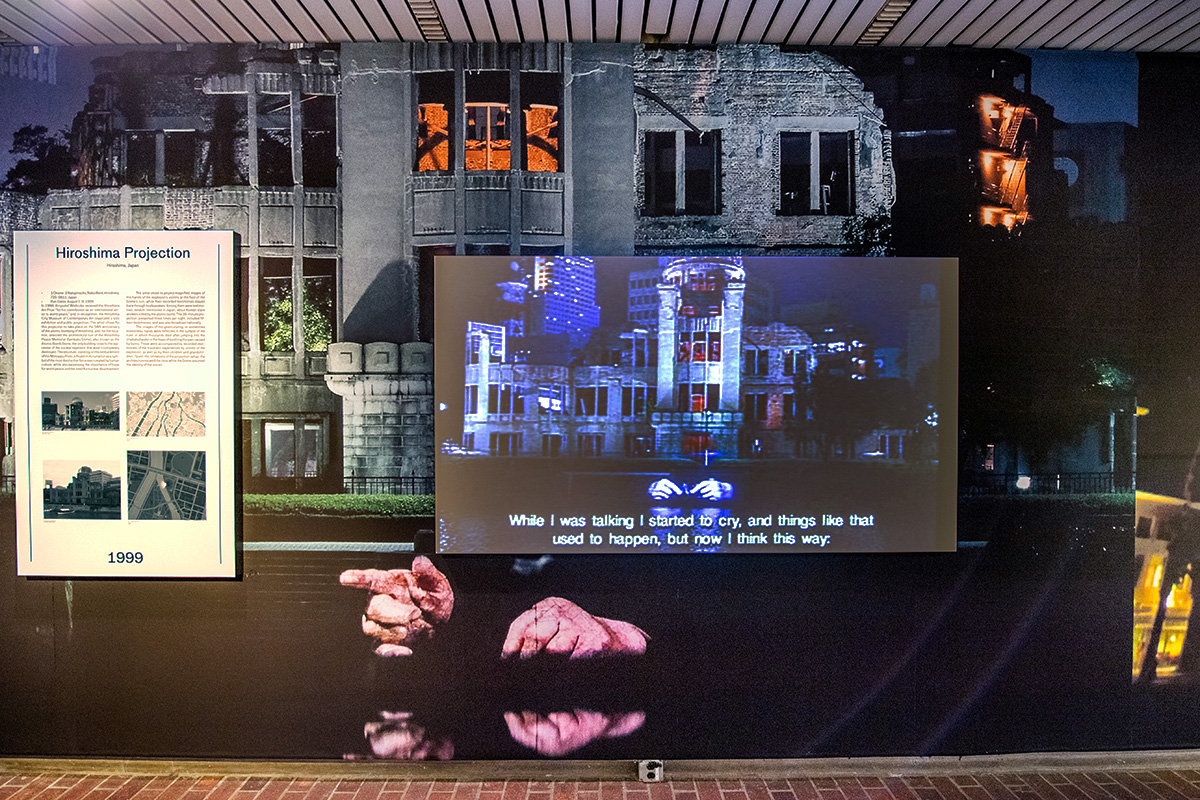Interrogative Design: Selected Works of Krzysztof Wodiczko – Hiroshima Projection
For the duration of the Interrogative Design exhibition, we will be providing expanded online content to give viewers a deeper access to selected projects. Materials for this exhibit provided by the artist, with unique edits specially produced for this project by GSD Exhibitions.
Hiroshima Projection, 1999, Hiroshima, Japan
• 1 Chome-1 Nakajimacho, Naka Ward, Hiroshima, 730-0811, Japan
• Run Dates: August 7–9, 1999
In 1998, Krzysztof Wodiczko received the Hiroshima Art Prize “for his contribution as an international artist to world peace,” and, in recognition, the Hiroshima City Museum of Contemporary Art organized a solo exhibition and public projection. The artist chose for this projection to take place on the 54th anniversary of the atomic bombing of Hiroshima, and, for the location, selected the architectural ruin of the Hiroshima Peace Memorial (Genbaku Dome), also known as the Atomic Bomb Dome, the only building close to the epicenter of the nuclear explosion that wasn’t completely destroyed. The structure, standing on the embankment of the Motoyasu River, is frozen in its ruination as a symbol of the most destructive force ever created by human culture, while also expressing the importance of hope for world peace and the need for nuclear disarmament.
The artist chose to project magnified images of the hands of the explosion’s victims at the foot of the Dome’s ruin, while their recorded testimonies played back through loudspeakers. Among them were testimonies, seldom mentioned in Japan, about Korean slave workers killed by the atomic bomb. The 39-minute projection, presented three times per night, included fifteen testimonies, and was also broadcast nationally.
The images of the gesticulating, or sometimes motionless, hands were reflected in the surface of the river, in which thousands died after jumping into the irradiated water in the hope of soothing the pain caused by burns. These were accompanied by recorded testimonies of the traumatic experiences by victims of the explosion, as well as by their children and grandchildren. Given the limitations of the projection setup, the architecture evoked the torso while the Dome assumed the identity of the voices.



